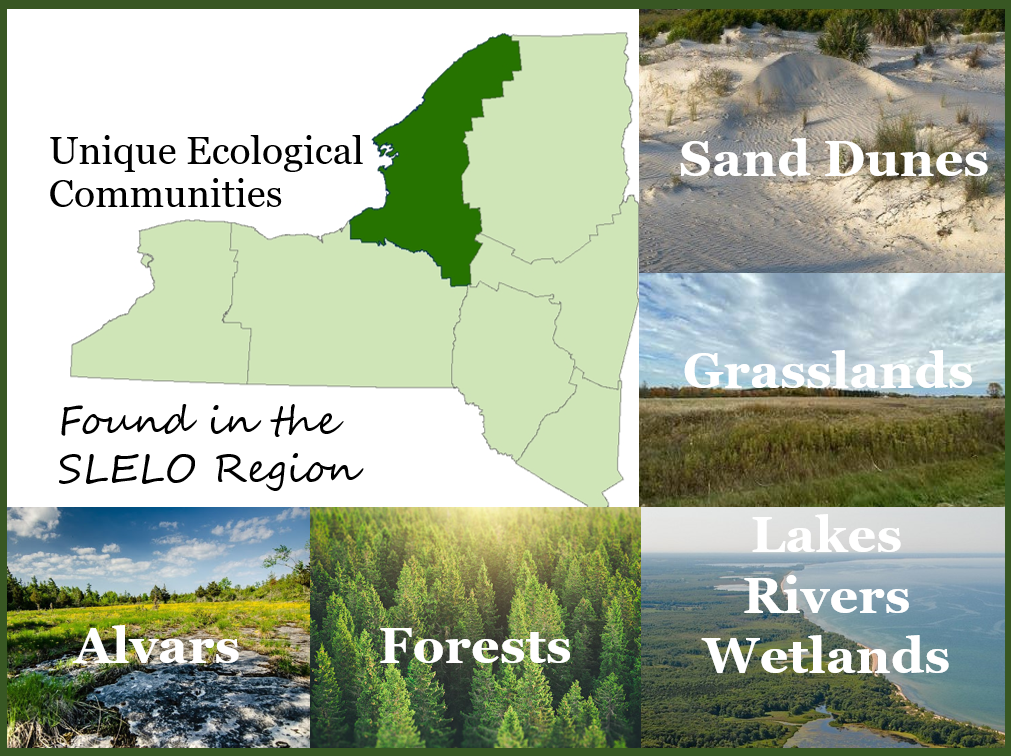The St. Lawrence Eastern Lake Ontario (SLELO) region is a diverse area encompassing 7,387 square miles or 4.7 million acres of land including 3 million acres of forests, and 1.6 million acres of surface water.
Within the beautiful vast landscapes and water bodies of the region are 10 level IV state-ranked ecoregions, 56 rare ecological communities, and 89 rare plant species categorized as S1 or S2 on the NY Rare Plant Status List.
Characterized by shallow soils, limestone bedrock, and hard environmental conditions, alvars are globally rare natural communities– in which the SLELO region holds two of, the Chaumont Barrens and Three Mile Bay Barrens. These ecological rarities support threatened songbirds like the whip-poor-will, and rare plants like prairie smoke, yellow lady’s slipper, Great Plain’s ladies tresses, and reindeer lichen.
Stretching 17 miles along the eastern shoreline of Lake Ontario, between the mouth of the Salmon River to the outlet of Black Pond, is New York’s largest freshwater barrier dune system. The dune system provides habitat for endangered piping plover and rare Great Lake sand cherry and sand dune willow.
Other unique ecological communities in the SLELO region include boreal heath barrens dominated by dwarf shrubland, heath species, and sandy soils; pitch-pine dune woodlands growing along shoreline sand dunes; dense beech-maple mesic forests of the Tug Hill Plateau; the deep and shallow marshes of estuaries scattered along the lakes and rivers of the region and various bogs and swamps.
These unique ecological communities define the St. Lawrence Eastern Lake Ontario region and the work that SLELO PRISM does aims to protect the lands and waters that make our region so special.

Learn more about the unique landscapes and ecological communities that make the St. Lawrence Eastern Lake Ontario or SLELO region so special and the work that SLELO PRISM and our partners do to protect our lands and waters from the impacts of invasive species.


